Why you need to grow and cook with sweet marjoram (hint: it’s not the same as oregano)
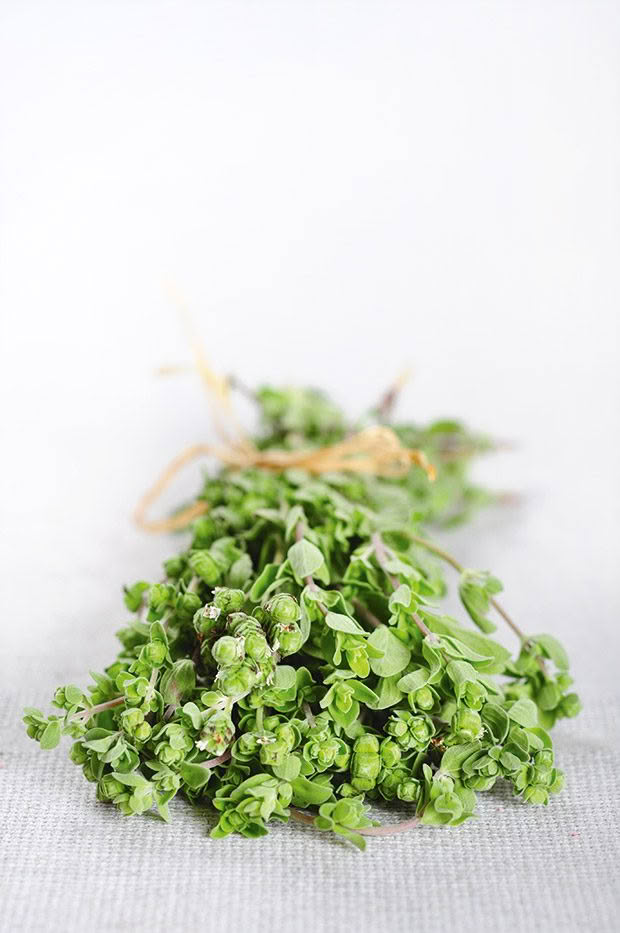
Jenny plants a secret stash of a sweet little herb and immediately regrets it.
Words: Jenny Somervell
Last summer, I had a secret at the bottom of the garden. I thought I was doing my Origanum marjoranum plant a favour, giving it time to grow and spread before the cook ravaged it. But my cunning plan backfired. The cook – my husband, Ken – surprised me by weeding our gardens. Not recognising the sweet marjoram, he weeded it out and dumped it.
Nothing upsets the cook more than finding out he’s been deprived of an essential herb. Nothing bothers the gardener more than finding a carefully nurtured plant upended in the compost. Happily, our relationship survived. Fortunately, I’d over-propagated. It’s a hangover from when I ran a herb nursery, so I always have spares, back-up seedlings safe and secure in cold frames.
Ken barely glanced at the recipes I suggested. He did his own exploring, discovering sweet marjoram’s warm, delicate taste, faintly like sage, with a sweet aftertaste of mint or camphor. It enhances a dish rather than overwhelming it. Unlike its stronger-tasting relative oregano, it complements more subtly flavoured foods, including many summer vegetables.
One of Ken’s stand-out recipes is a salad dressing which works hot or cold. We tried it with feta and beans, then beetroot. I suspect it would go well with almost any vegetable. Ken also came up with a berry and mascarpone cheese dessert featuring sweet marjoram in the base. The combination of cheese, berries, and spicy-sweet marjoram is a unique flavour sensation, and the sort of creation I’ve only tried in an upmarket restaurant. Sweet marjoram’s scientific name comes from the Greek words ‘oros ganos’ or ‘joy of the mountain’. The story is that the goddess Aphrodite created its sweet, spicy taste as a symbol of happiness.
It shouldn’t have taken us so long to grow it. We’re definitely happier having it in our garden.
OREGANO VS SWEET MARJORAM
Sweet marjoram and oregano (Origanum vulgare) are very difficult to tell apart. Many recipes will tell you they can be used interchangeably, but they’re quite different.
Oregano tends to be more available and is better known. Both are in season in summer and can be harvested, dried, and stored for up to six months.
Oregano
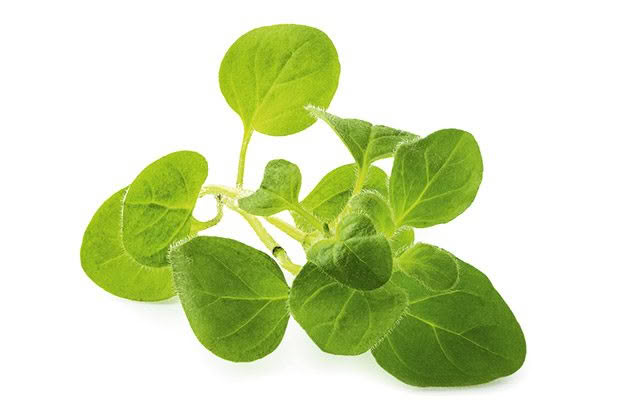
Looks: sprawling habit. Hardy perennial that survives winter as a dormant rhizome. Dark green leaves up to 10-38mm long, and pink-purple flowers.
Flavour: spicy, slightly bitter with a lemon thyme aftertaste.
Scent: pungent, spicy.
Where to use it: oregano gives pizza its ‘zippy’ taste. It’s also used to flavour mushroom dishes, pasta sauces, and red meats. In Mexican cooking, it’s added to bean dishes, burrito and taco fillings, and salsa.
Sweet Marjoram
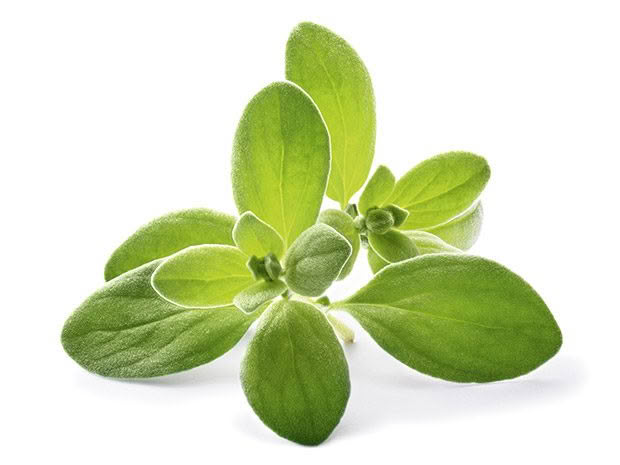
Looks: grows to about knee height on woody stems. Half-hardy perennial, usually grown as an annual. Rounded, soft, matte green leaves up to 10mm long. Grey-green flowerheads look like dainty oval knobs, almost hiding the small white flowers.
Flavour: warm, delicate, sweet, mild, slightly minty-citrus.
Scent: very fragrant, sweet, soft, lemon-mint.
Where to use it: salads and salad dressings, with cheeses, egg and light meat dishes, summer vegetables, and in cream sauces.
HOW TO GROW
You might find sweet marjoram in garden centres, or you can grow your own. The key to success is good drainage and plenty of sun.
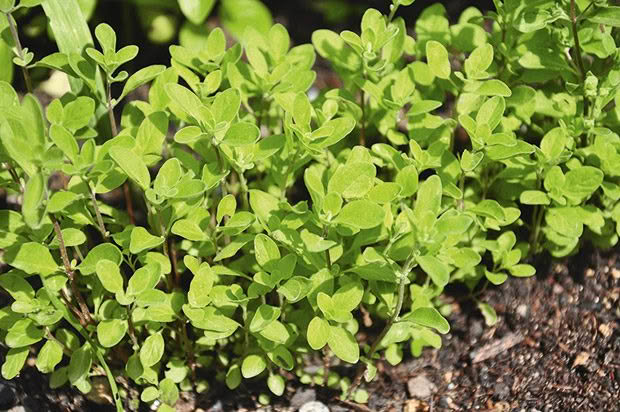
1. You’ll need to plant above clay soils, in a mix of well-rotted manure and grit (such as stones or pumice). Sow the tiny seeds indoors in sieved seed raising mix six weeks before the last frost.
2. Use a good quality seed raising mix as seedlings are prone to the ‘damping off’ fungal diseases. The seed is very fine – mix with a little dry sand to aid coverage when sowing. Leave seed uncovered, or sieve very lightly over the top with a little seed mix, perlite or pumice, so it barely covers the seeds.
3. Thin seedlings if they are crowded. Prick out as soon as they are large enough to handle.
4. Water only as required. Harden off gradually before planting outside. Space plants outside at 25-30cm apart.
5. Plants will grow in pots, provided they have full sun and are in a well-drained potting mix. Start pinching out the growing tips when plants are at least 10-15cm high to encourage a bushy shape, cutting just above the leaf buds. Pick regularly to maintain a rounded bush.
HOW TO USE MARJORAM
Only add sweet marjoram in the last few minutes of cooking just before serving, so the flavour isn’t lost.
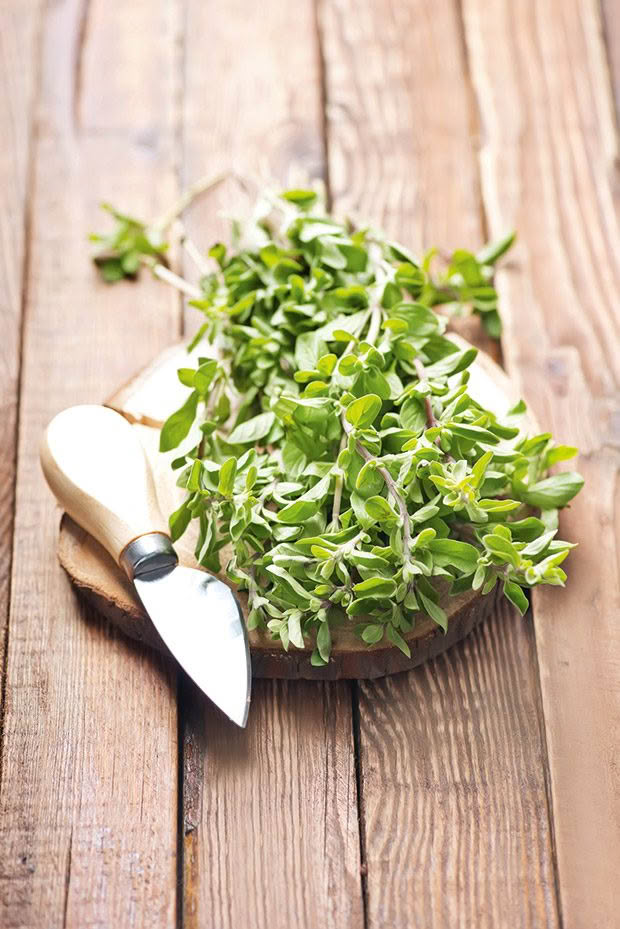
■ Marjoram complements many vegetables, especially carrots, beetroot, cucumber, mushrooms, globe artichokes, and Brassicas, eg broccoli, cabbage.
■ Add to egg dishes, especially good when combined with parsley.
■ Traditionally used to complement fish, chicken, lamb, and veal. Rub into meat before roasting.
■ Delicious with cold chicken and aspic.
■ Add sweet marjoram to dressings and marinades, combined with other herbs.
■ Marjoram complements fresh cheeses such as mozzarella, cream cheese, cottage cheese, ricotta, and mascarpone.
■ Marjoram is the only oregano mild enough to add to salads.
■ Yummy in roast beef sandwiches.
Recipe: Baked Cheese & Berry Flan with Sweet Marjoram
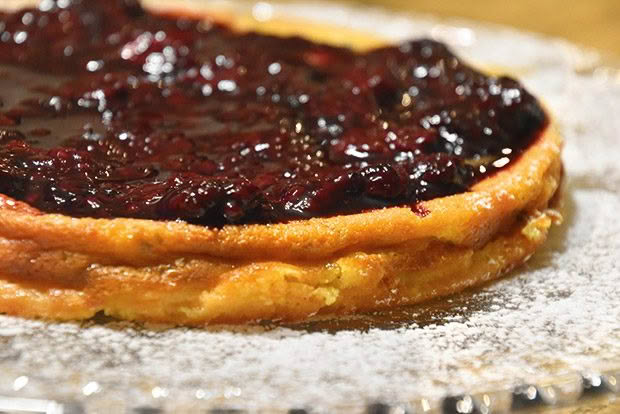
Serves: 4-6
Time: 50 minutes
I used boysenberries for this dish. Fresh or frozen is fine.
INGREDIENTS
Flan:
2 tbsp sweet marjoram leaves
200g ricotta or mascarpone cheese
1 cup white sugar
3 eggs
250g Greek-style yoghurt, plain or honey flavour
Berry topping:
2 cups berries
2 tbsp or so icing sugar (to taste)
¼ cup liquor, eg brandy, Cointreau, Grand Marnier etc OR orange juice
METHOD
Pre-heat the oven to 175°C. Remove any woody stalks from the marjoram, then chop finely.
Mix the cheese, yoghurt, and eggs to a smooth batter, then add in the marjoram and sugar. Pour into a buttered oven dish and bake 25-30 minutes until a knife comes out clean. Remove from the oven and cool a little before transferring to a serving platter.
While it’s baking, add the berries and liquor to a saucepan and bring to a gentle simmer. Add the icing sugar to taste, depending on the tartness of the berries. Simmer, stirring regularly, for 25-30 minutes until the liquid reduces to a thick syrup.
Allow to cool a little before pouring over the baked cheese. Serve warm or cold with whipped cream, and ice cream or yoghurt.
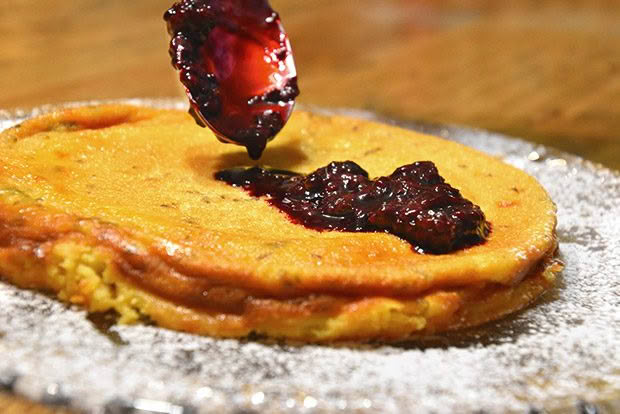
Recipe: Citrus & Sweet Marjoram Dressing
Makes: 60ml
Time: 35 minutes
Use a good quality extra virgin olive oil for the best flavour.
INGREDIENTS
¼ cup extra virgin olive oil
rind & juice of a lime or lemon
2 tsp light-flavoured honey
1 tbsp finely chopped marjoram leaves
salt & pepper to taste
METHOD
Heat the honey to a liquid. Add all the ingredients to a small glass jar with a lid. Put the lid on and shake to mix. Leave to stand for 30 minutes before using, shaking occasionally. Serve on warm bean or beetroot salad.
Recipe: Marjoram Tea
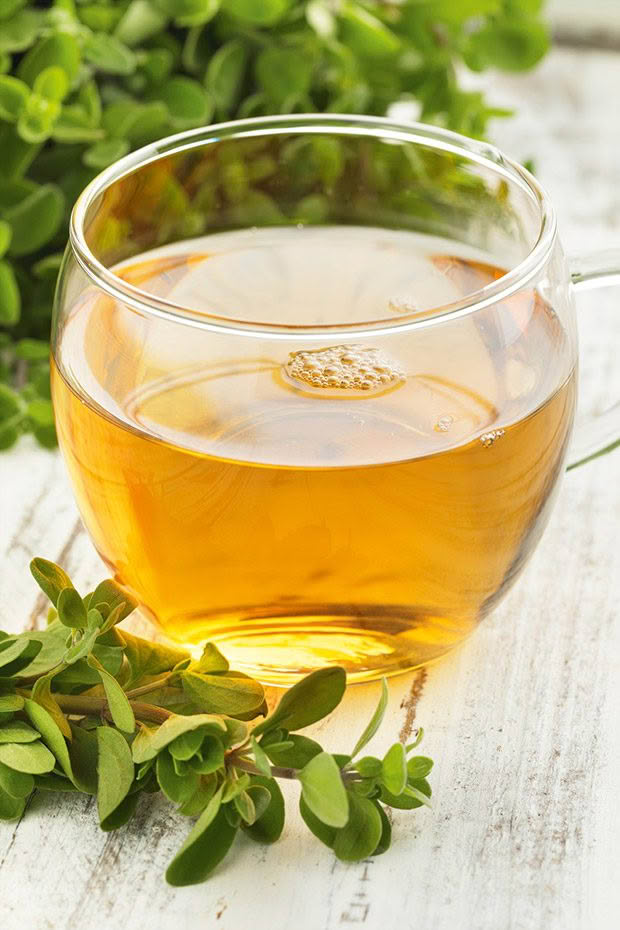
Medicinally, marjoram is a warming herb used against ‘cold diseases of the brain and head’. Marjoram tea, wrote noted English herbalist John Gerard, ‘easeth such as are given to overmuch sighing’.
The tea is traditionally used to help with colds, headaches, gastrointestinal disorders, and as a digestive aid. To make: grind 1 tsp of fresh marjoram leaves into a paste using a mortar and pestle, then add to 200ml of hot water. Boil for 15 minutes, then drink.

